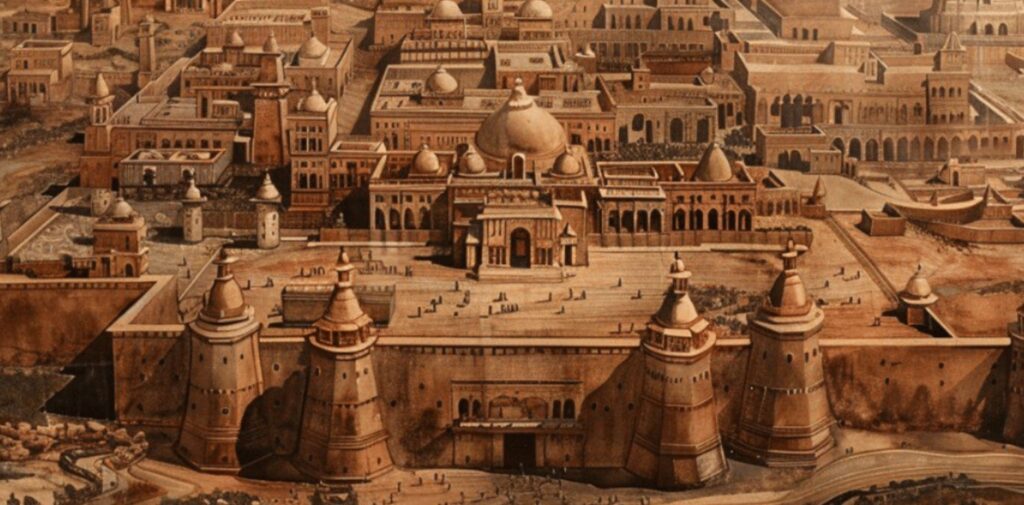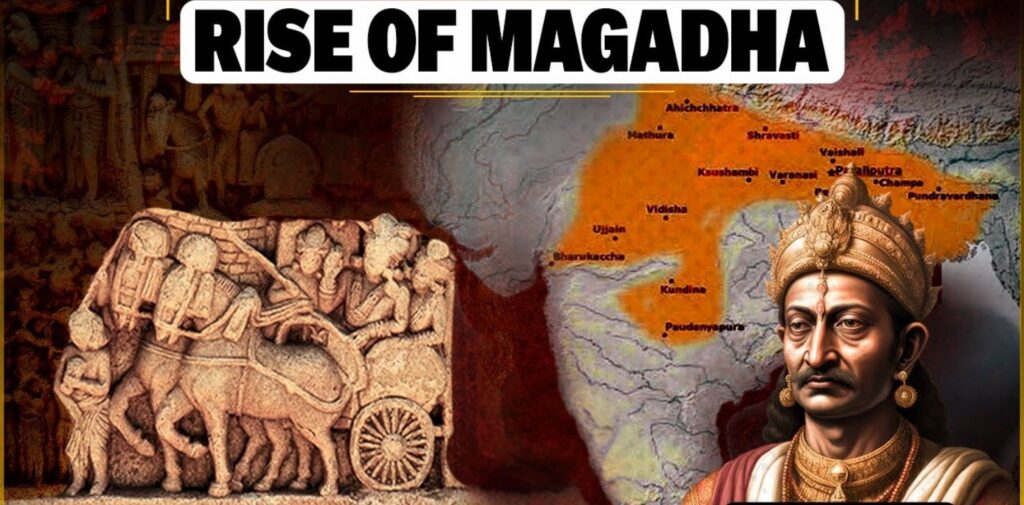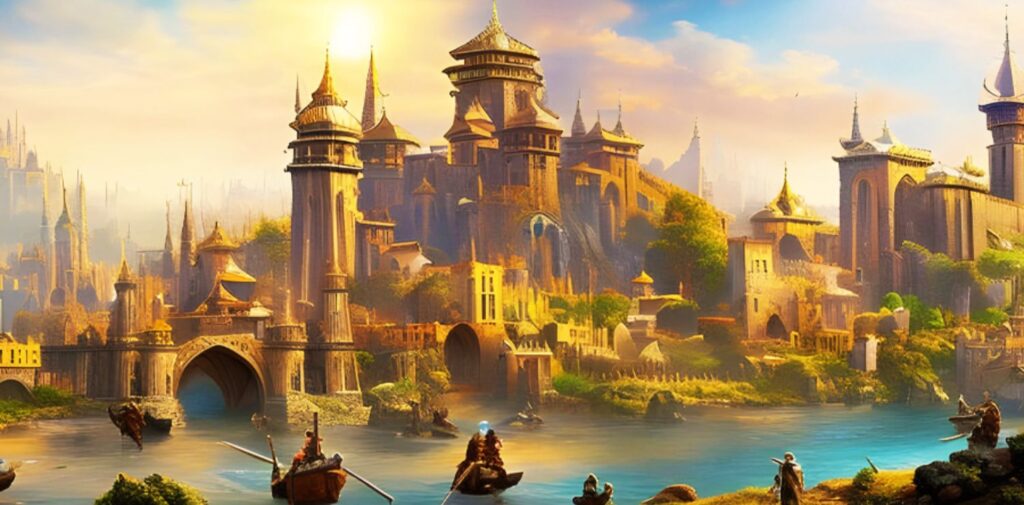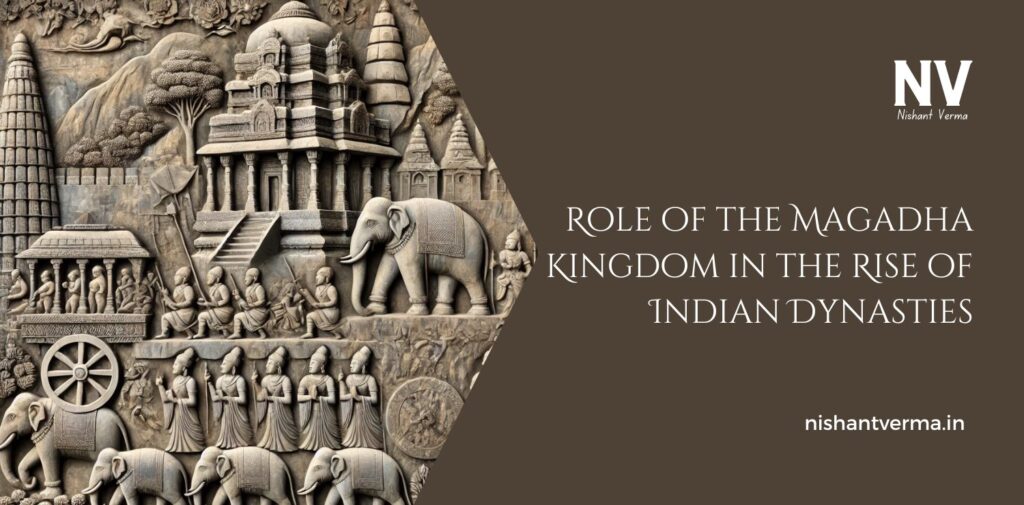Long ago, in the history of India, there was a powerful kingdom called Magadha. This kingdom played a very important role in shaping the history of India. It was not just a small kingdom; it became one of the biggest and most powerful regions in ancient India. The rise of Magadha helped bring many great dynasties into power, and these dynasties played a key role in building the India we know today.
Let’s take a journey back in time and learn about how Magadha helped Indian dynasties rise and grow.
What Was the Magadha Kingdom?
Magadha Kingdom was an ancient kingdom located in the eastern part of India, in what is now the state of Bihar. It was one of the 16 Mahajanapadas (large regions or kingdoms) in ancient India. The Magadha kingdom was located along the Ganges River, which was an important area for trade, farming, and culture.
Magadha became famous because it was home to many powerful kings and dynasties. These rulers played an important role in the history of India, helping to build strong kingdoms and spread new ideas.

How Did Magadha Become So Powerful?
Magadha’s power didn’t come overnight. It took time for the kingdom to grow and become one of the most influential regions in ancient India. Several important events and factors helped make Magadha powerful.
- Geography and Natural Resources: Magadha was blessed with a very good location. It was near the Ganges River, which provided water for farming. This made the land fertile and perfect for growing crops. With plenty of food, the people of Magadha could feed a large army and support a big population.
- Strong Rulers: Magadha’s power grew when strong rulers took charge. One of the earliest kings to make Magadha powerful was King Bimbisara. He ruled in the 6th century BCE and expanded the kingdom by forming alliances and conquering neighboring areas.
- Trade and Wealth: Magadha was also an important center for trade. The Ganges River made it easy for people to travel, exchange goods, and do business. This brought wealth to Magadha, which helped the kings build powerful armies and gain more land.
- Military Power: The rulers of Magadha built strong armies that helped them conquer other kingdoms and expand their territory. With a large army and resources, they were able to defeat their enemies and keep their land safe.

The Rise of Magadha and Its Dynasties
Magadha is important in Indian history because it gave birth to two of the most famous dynasties in ancient India: the Maurya Dynasty and the Gupta Dynasty. Let’s learn more about these dynasties and how they helped India rise to greatness.
The Maurya Dynasty
The Maurya Dynasty is one of the most famous dynasties in Indian history. It was founded by Chandragupta Maurya in the 4th century BCE. Under his rule, Magadha became a huge empire. Chandragupta’s empire stretched from the eastern part of India to the western part, covering large areas.
Chandragupta was a very strong and wise ruler. He created a well-organized government and a large army. But his grandson, Ashoka, is the most famous king from the Maurya Dynasty.
- Ashoka the Great: Ashoka was one of India’s greatest rulers. He took the Maurya Empire to its height, making it one of the largest empires of its time. Ashoka is remembered for spreading the teachings of Buddhism across India and beyond. After a bloody battle at Kalinga, he realized the pain of war and decided to follow the path of peace and kindness. Ashoka’s reign was known for promoting welfare, building roads, and spreading Buddhist values of non-violence and compassion.
The Maurya Dynasty was important because it showed how Magadha could grow into a powerful empire that ruled much of India and influenced other parts of the world.
The Gupta Dynasty
The Gupta Dynasty is another important dynasty that arose in Magadha. The Gupta rulers are known for their contributions to Indian culture and science. The Gupta period, which lasted from the 4th to the 6th century CE, is often called the Golden Age of India.
Under the leadership of Chandragupta I and his son Samudragupta, the Gupta Empire grew strong. But it was Chandragupta II, also called Vikramaditya, who made the Gupta Empire reach its peak. During this time, India saw a boom in art, literature, mathematics, and science.
- Golden Age of Culture: The Gupta rulers were great patrons of art and learning. Famous scholars like Kalidasa (a poet and playwright) and Aryabhata (a mathematician and astronomer) flourished during this time. The Gupta period also saw the invention of the decimal system and the concept of zero, which are still used today.
- Religious Tolerance: Even though the Gupta rulers supported Hinduism, they were also tolerant of other religions like Buddhism and Jainism. This helped create a peaceful and prosperous society where many different cultures and ideas could flourish.
The Gupta Dynasty showed how Magadha could once again lead India into a time of peace, learning, and culture.
Magadha’s Influence on Other Kingdoms
Magadha’s rise helped set an example for many other kingdoms in India. Its strong rulers and rich culture influenced the way other kingdoms were run. The Maurya and Gupta empires inspired many later rulers to follow their example.
- Political Unity: The Maurya Dynasty, especially under Ashoka, showed that India could be united under one strong ruler. This idea of political unity influenced other kingdoms and empires in India.
- Cultural Exchange: The Gupta period was a time of cultural exchange. The Gupta rulers helped promote trade with countries in the Middle East, Central Asia, and even Southeast Asia. This spread Indian culture, art, and ideas to other parts of the world.

How Magadha Shaped India’s Future
Magadha played a very important role in the history of India. It helped shape the Indian subcontinent in many ways:
- Political Structure: The rulers of Magadha created strong empires that set the example for future rulers in India. The idea of a central government with a strong army and organized administration became an important part of India’s political history.
- Cultural Influence: The Gupta period, especially, was a time when Indian culture, literature, and science flourished. This legacy continues to influence India even today.
- Religion and Philosophy: The teachings of Ashoka about peace and Buddhism spread throughout India and beyond. The Maurya and Gupta empires helped spread Indian religions and ideas to other countries in Asia.
Conclusion: The Legacy of Magadha
The Magadha Kingdom was one of the most important kingdoms in ancient Indian history. Through powerful rulers and great empires like the Maurya and Gupta dynasties, Magadha helped shape India’s culture, politics, and religion. These empires brought peace, prosperity, and cultural richness to India, leaving behind a legacy that continues to influence the world today.
Magadha shows us how one kingdom, with the right leaders and resources, can change the course of history and leave a lasting impact on the world. The rise of Magadha and its dynasties helped create the India we know today—an India rich in culture, knowledge, and history.




